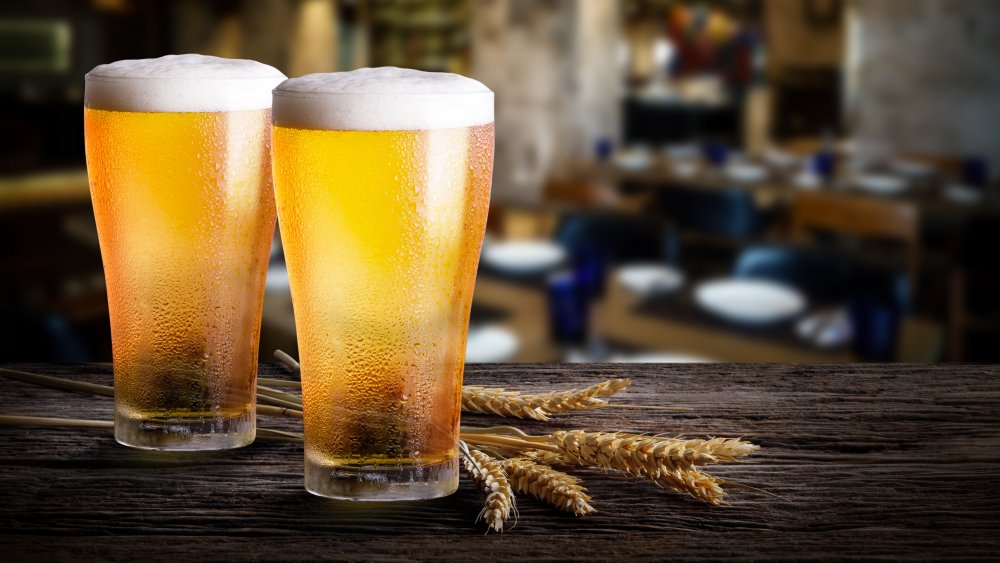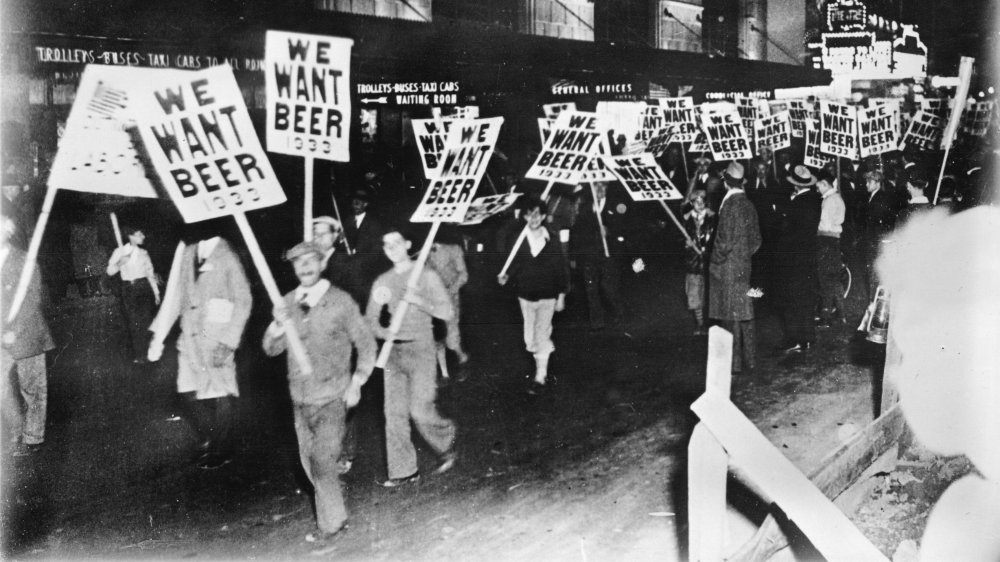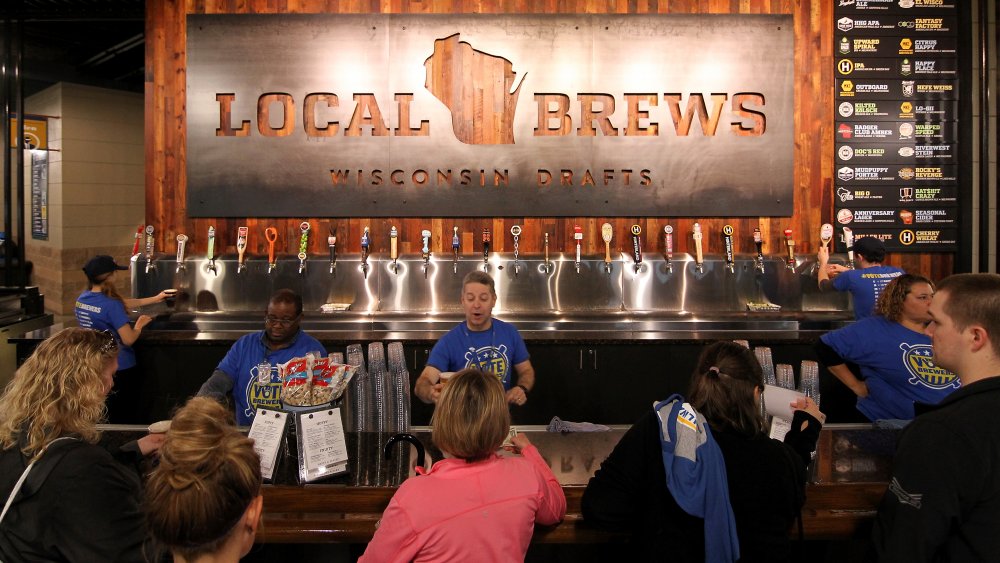The Real Reason American Beer Often Has Less Alcohol Content
One complaint that visitors from other countries often have about the U.S. relates to one of our favorite beverages, beer. Beer is hardly all-American — after all, it's been a global phenomenon ever since the ladies of ancient Egypt brewed it up for their households. The U.S., however, did gift the world with one invention they really wish we'd kept to ourselves, that being the recipe for light beer. According to the Los Angeles Times, this product was developed in 1967 by a California chemist, and although it didn't catch on immediately, by 2018, six out of the top 10 best-selling beers in America would be of the light (or "lite") variety (via USA Today).
Even non-light American macrobrews, however, may have a lower alcohol content than do their imported counterparts. A chart put together by Efficient Drinker shows many popular domestic non-light beers coming in at 4.5 to 5.0 ABV, while Crushbrew notes that the Germans prefer beers in the 5.2 to 6.0 range and the Belgians go for stronger brews of 7.0 to 9.5 ABV. They do note that the UK and Ireland, due to tax rates based on beer strength, are also now producing typically weaker beers. This information seems to be backed up by the British brews included on the Efficient Drinker list, as these are about the same strength as the American ones.
The history behind American preference for less alcoholic brews
According to the Beer Institute, colonial home brewers had a term for low-alcohol brews: small beer, which was generally weaker than the commercially available kind served up in taverns. Small beer also seemed to be considered more of a staple than a recreational beverage. By the mid-19th century, however, there arose a need for a weaker variety of draft beer — since many laborers would take their meals at taverns near the factories and mines where they worked, and while they couldn't pass up a beer with their meal, they were savvy enough to be aware that being drunk on the job wasn't in their best interest (a lesson which may have been lost on some of their latter-day descendants). As The Atlantic tells it, newly-arrived German brewers stepped in to fill this need by replacing porters, stouts, and ales with milder lagers.
Further impetus was given to weakening American beers as the temperance movement took hold later in that century. Beer was promoted as a more temperance-friendly alternative to hard liquor, although once Prohibition went into law, beer was also banned and over 1,500 breweries went belly-up
Is American beer truly as weak as its rumored to be, though?
Part of the bad rep American beer has might actually be based on some misinformation, at least according to Gunaxin. They reveal the seldom-discussed fact that in the U.S., the alcohol content of beer is often determined by its weight, whereas in most other countries alcohol content tends to be determined by volume. While things get kind of confusingly math-y, when the foam settles, what this means is that a beer that comes in at 3.2 percent by weight (ABW) is actually a more respectable 4.0 percent by volume (ABV). So, as they so elegantly put it, comparing the alcohol levels of domestic and imported brews is akin to comparing apples to where the sun doesn't shine and that doing so just makes you a bad person — just take a look to see how it appears on your can or bottle (either ABV or ABW).
While we'd prefer not to be so harsh (nor so crude), still, perhaps you should think twice — and possibly perform some complex calculations — before you start hating on our native macrobrews. After all, something had to make Milwaukee famous, and it sure wasn't going to be the weather.


